The 10 most endangered historic properties, according to South Bend preservation agency
SOUTH BEND ― The Birdsell Mansion, built in 1898 and last used as office space more than a decade ago, is the only local building included on Indiana Landmarks’ annual “10 Most Endangered” list this year.
But nine other area landmarks are noted in a similar ranking formed this May by the Historic Preservation Commission of South Bend and St. Joseph County. The commission protects unincorporated regions of the county.
The outlook seems dire for several of the agency's Top 10 properties.
The old Marquette School building could be slated for demolition next spring, according to South Bend schools officials. Portage Manor is in flux after St. Joseph County commissioners chose to close the home for the vulnerable on July 31. The owner of the State Theater is being sued for allegedly failing to make payments on a loan exceeding $800,000, court documents show.
Restoring history: On 'most endangered' list 2 straight years, Birdsell Mansion owner shares renovation plans
The goal of the list is to raise awareness before buildings that comprise South Bend’s historic fabric deteriorate beyond the point of no return, Historic Preservation Administrator Adam Toering said. That threat was realized last year when the city ordered an emergency demolition of the old South Bend Brewing Association building.
“This list is not about publicly shaming the owners," HPC President Sarah Andrews told The Tribune. "This list is about building awareness for these beautiful pieces of art that are in our community. How can we galvanize the community to come together and figure out how we can save these buildings?”
Here are the commission's Top 10 endangered local properties, listed in no particular order, and their owners’ latest known plans.
Nine of the properties are in South Bend city limits while one is south of town, near Lakeville. Most are listed on the National Register of Historic Places, the federal government program that offers financial incentives to restore historic buildings, or designated as local landmarks, which requires the HPC to approve any alterations, additions or demolitions.
The old Marquette School, 1905 College St., finished in 1937
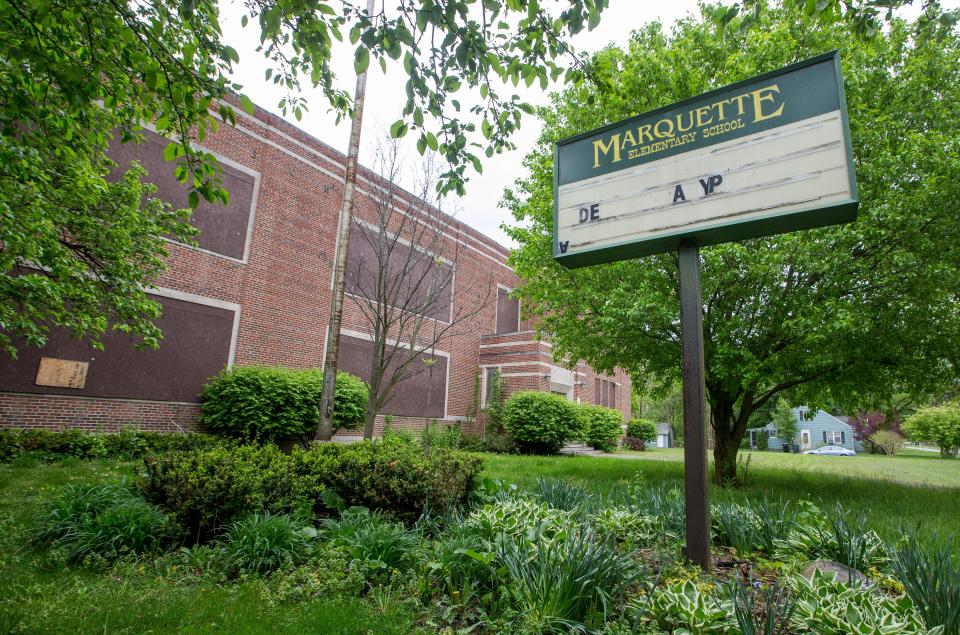
South Bend Community School Corp. officials plan to demolish the former Marquette School building next spring, Chief Financial Officer Kareemah Fowler told The Tribune.
But demolitions of registered South Bend landmarks require approval from the historic preservation commission, which denied an initial request to tear down the old school in 2017. That same year, the old school, which was finished in 1937 as part of the Works Progress Administration, made Indiana Landmarks' list of most endangered properties.
The school district has considered demolishing the building since 2007, when it opted to spent $17 million to build Marquette Montessori Academy just north of the historic school.
After the rejected demolition request, the school corporation agreed in 2021 to give the building to developer Jon Anderson, who owns Brownsburg-based AP Development LLC.
Anderson planned to convert the space into low-income apartments. But his goal hinged on whether he could earn low-income tax credits from the Indiana Housing and Community Development Authority by the end of 2022.
For two straight years, the state agency turned down Anderson's application.
The district now wants to tear down the large brick building to save $16,000 a year on maintenance costs and to reclaim the land for the Montessori Academy, Fowler said. Officials have designs for a public play area, a walking path and raised gardens as possible future uses.
The city's preservation commission won't easily acquiesce, however.
The agency's standards say a historic landmark shall not be demolished unless it poses a threat to public safety. The former Marquette School is a local landmark and it's on the National Register of Historic Places.
South Bend schools officials will have to prove demolition is the only option with photographs, measured drawings and other descriptive reports.
“We continue to fight for buildings until the last minute," Andrews told The Tribune. "We don’t think anything is a lost cause."
The State Theater, 212-216 S. Michigan St., finished in 1921
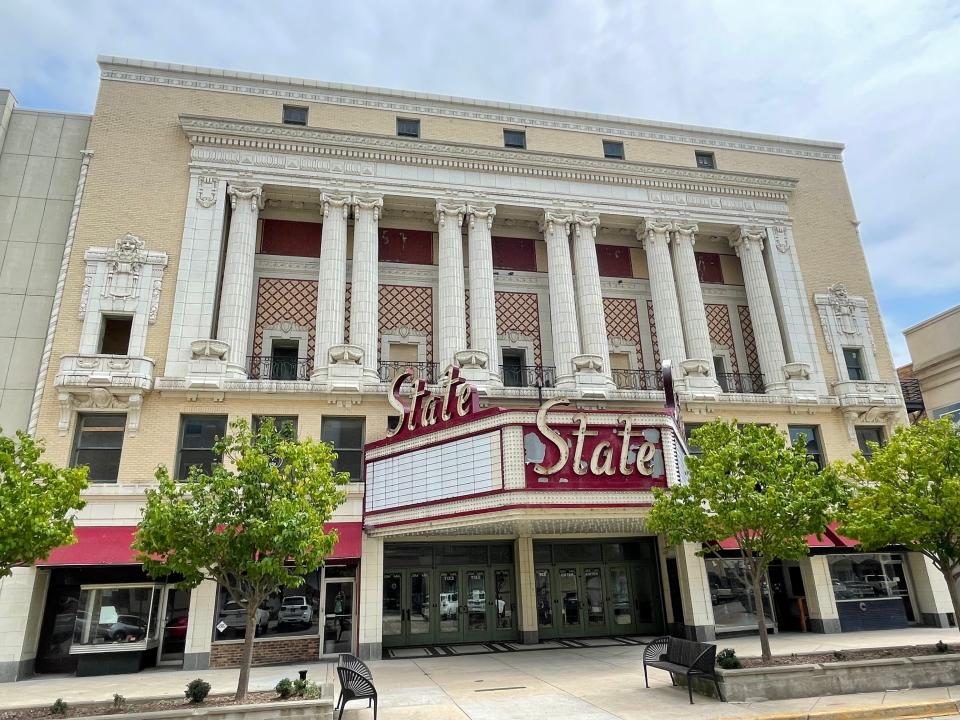
When the lights of the State Theater marquee turned on last June, some were hopeful for coming development at the downtown building.
But plans shared at the time appear to have been set back by a mortgage foreclosure lawsuit filed this March against the company that owns the building, Toscana Capital Group LLC.
Richard Ejemenye, the registered agent for Toscana, said last year that he plans to transform the three-story building into a space with offices, restaurants and perhaps apartments. He expected the project to cost about $6 million and possibly be done by this summer.
Instead, according to a lawsuit filed this March, Toscana is alleged to have accepted a hefty loan from AMF Holdings LLC last May and failed to make timely payments over the course of the past year. The lender says Toscana owes more than $820,000.
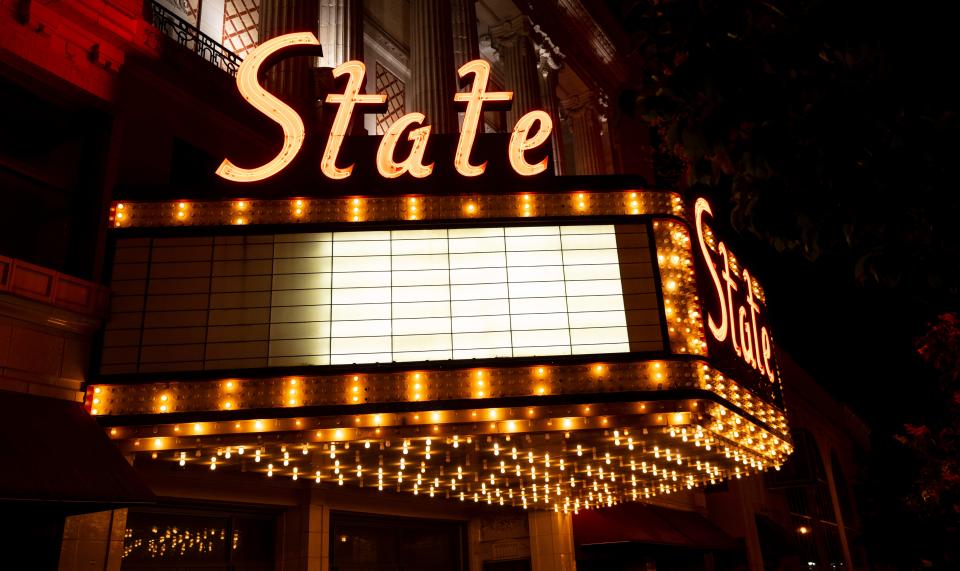
AMF Holdings is asking the court to strip ownership of the theater from Toscana and allow AMF to sell it to recover its money.
Ejemenye did not return multiple calls requesting comment on the lawsuit or the status of renovation plans. Attorneys for Ejemenye did not respond to an email or voicemails requesting comment, but in legal filings they deny that Toscana owes more than $820,000.
Finished in 1921 as the Blackstone Theater, the property at 212-216 S. Michigan St. became the State in 1931 and operated as a movie theater until 1977.
Listed on the National Register of Historic Places, the State Theater lost two steady tenants, Idle Hours Bookshop and South Bend Brew Werks, in the past two years. They were plagued by issues such as holes in the roof that caused water damage.
Toscana took ownership of the building in August 2020. In April 2021, the city fined the company $10,000 for extensive water damage and a lack of communication with South Bend code enforcement.
Portage Manor, 3016 Portage Ave., finished in 1907
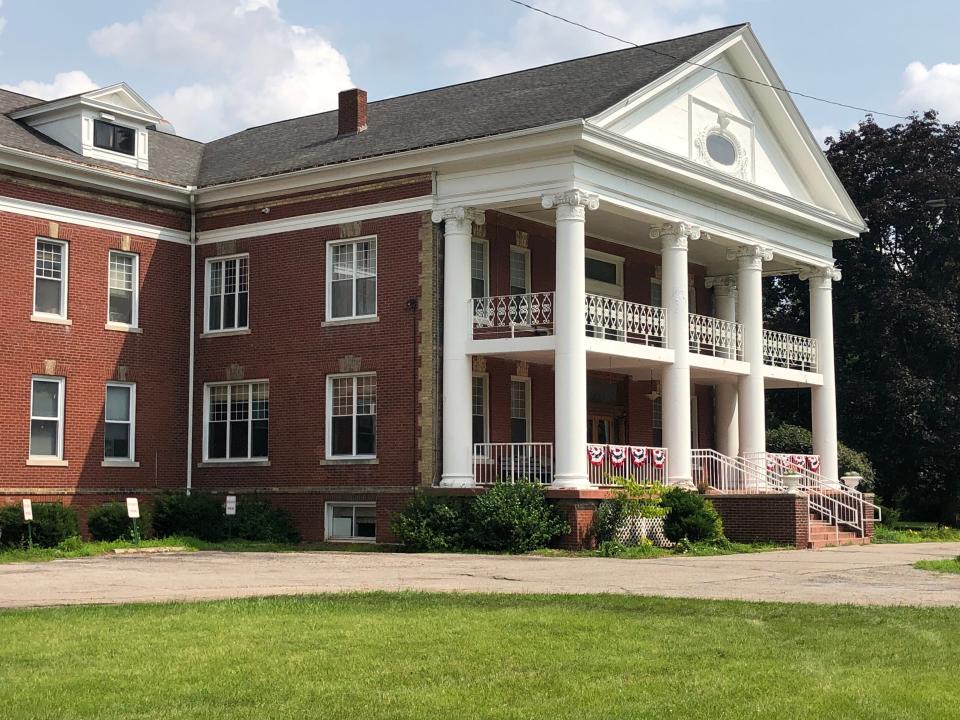
After more than a century of hosting vulnerable residents with mental illnesses or physical disabilities, the St. Joseph County-owned residential facility Portage Manor closed on July 31. More than 100 residents scattered across the region to live elsewhere.
The historic preservation commission placed the 1907 building at 3016 Portage Ave. on the endangered list because members feel the parcel on which it sits is “under threat of redevelopment.”
More: Portage Manor beckons developers. How could that affect its historic and green spaces?
City development officials have told The Tribune they would support plans to build "workforce housing," which targets renters and homeowners with moderate incomes, on an expanse of undeveloped land near the building.
The verdant campus is just south of the Indiana Toll Road and a hub of retailers and restaurants, drawing the attention of at least two housing developers. No commitments have been made yet.
Potential buyers don't seem as interested in the century-old building. White columns framing a high-ceilinged entryway that leads to multiple wings with rooms that housed up to 144 residents.
“We still have a lot of optimism that the building can be adaptively used,” Toering recently told The Tribune. “I see old buildings all the time that are in much worse condition than this one.”
The county closed Portage Manor this year because it received too little money from the state to care for residents, county commissioners say. They say it also needs costly rehabilitation.
At their Aug. 15 meeting, county commissioners formed a contract to survey acres of undeveloped land surrounding the facility — a key step before any development can begin.
Portage Manor is on the National Register of Historic Places.
The Birdsell Mansion, 511 W. Colfax Ave., finished in 1898
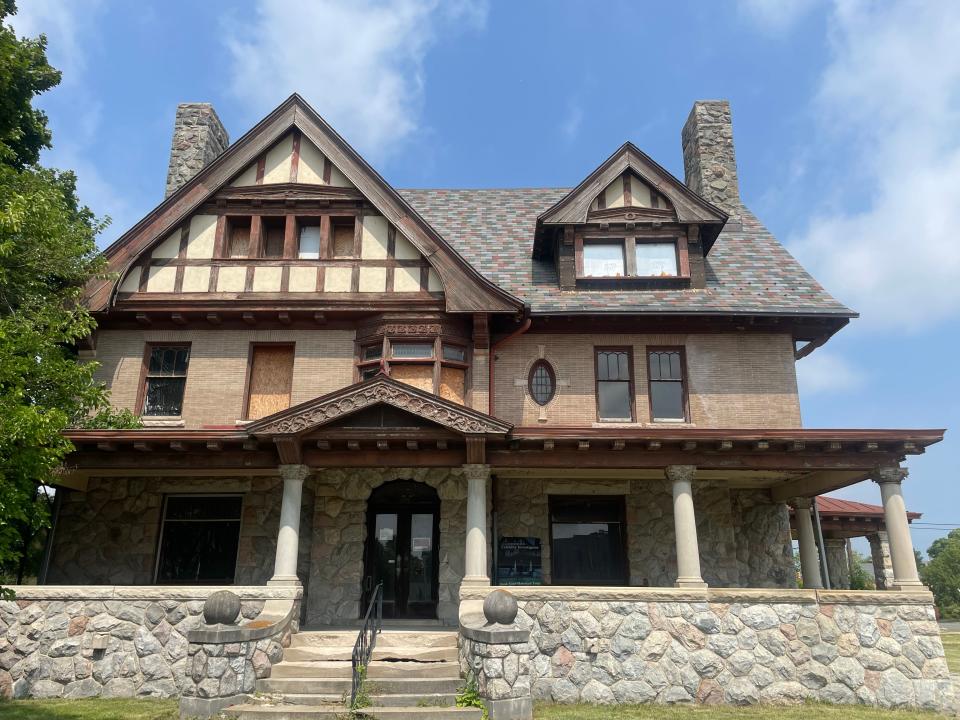
Conditions have worsened at The Birdsell Mansion since it first made Indiana Landmarks "most endangered" list in 2022, according to the statewide organization that advocates for historic preservation.
"Plywood and trash bags cover missing windows, and water seeping in from leaking gutters threatens high-style interior finishes," the 2023 entry for Birdsell Mansion reads. "It’s an ignominious state for one of South Bend’s standout homes."
Built in 1898 at 511 W. Colfax Ave., the Birdsell is one of several elaborate homes that serve as relics of the city’s industrial heyday. But unlike Tippecanoe Place and the Oliver Mansion, two mansions built during the same period that now operate respectively as an upscale restaurant and a museum, the Birdsell has sat mostly vacant for more than a decade.
Steve Mihaljevic bought the mansion in 2007, and property records show the building is officially owned by his wife, Anisah. He told The Tribune the pair plan to convert the building into short-term rental units with Airbnb, a project he expects to last for two years and to cost about half a million dollars.
He spent $200,000 to put on a new roof on the mansion in 2017, a crucial step to prevent water damage inside. His next step is to restore the building's windows. The historic preservation approved a certification for that work this June.
“I’m not happy that this property’s not done yet,” Mihaljevic said. “If everything was perfect in life, we probably would have had this done three years ago. But things aren’t perfect. My kids are getting older, and we have other investments we had to make.”
The mansion is an established South Bend landmark under city ordinance.
The Studebaker Administration Building, 635 S. Main St., finished in 1909
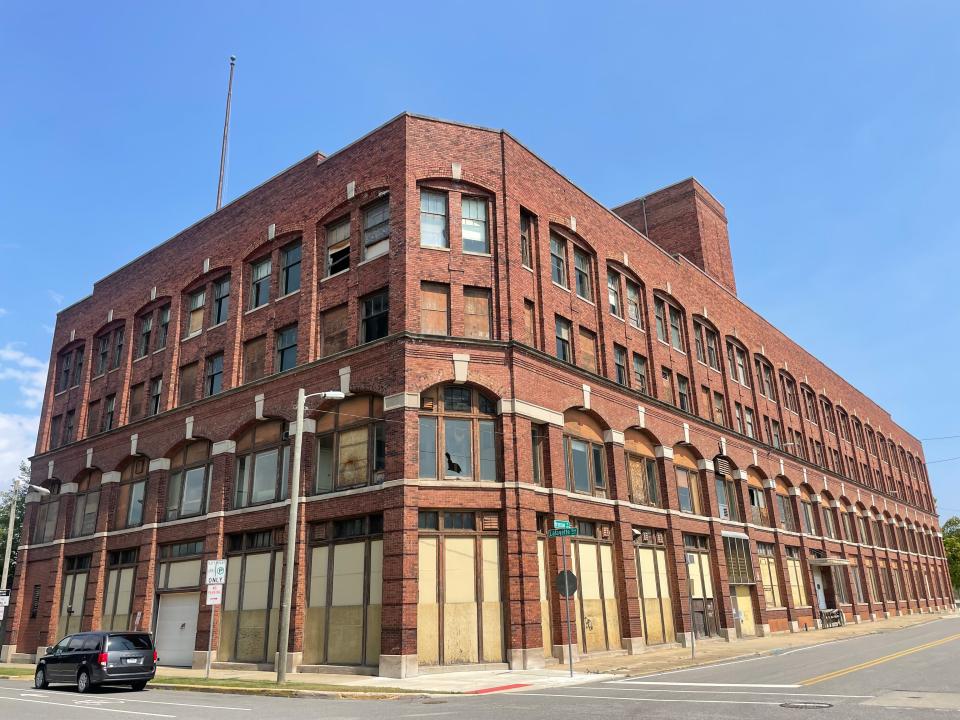
Studebaker opened its administration building in 1909, when the company was still making horse-drawn carriages, and closed it in 1963, when the company ceased to make anything.
The South Bend Community School Corp. was headquartered in the building from 1970 to 2005. Dudley Ventures, a Phoenix-based real estate and investment firm, bought the property in 2009.
Now South Bend businessman Kevin Smith says he's in the process of taking ownership of the local landmark at 635 S. Main St and incorporating it into his Renaissance District technology park south of downtown. His first purchase in the area was Union Station, which he saved from demolition in 1979.
Smith seeks to reunite the administration building with other massive Studebaker relics he owns that sit just across Lafayette Boulevard. Those are Building 84, a six-story structure just beyond Four Winds Field, and Building 113, a smaller building to its south that houses several tenants, including Purdue Polytechnic High School and Purdue Polytechnic college, the consulting firm enFocus, the nonprofit South Bend-Elkhart Regional Partnership, and the South Bend Tribune.
Preservation advocates are concerned about shattered or missing windows at the administration building. Smith said he's worked with Dudley Ventures over the past five years to stabilize the structure and plan a path for its productive reuse. He said he plans to fully shelter the building from the outdoors by this winter.
He envisions an educational space in the administration building. He's coordinating with the city of South Bend to determine what skills future workers are likely to need.
“We’re working toward understanding how it can best serve the community in bridging that educational gap to help us go from post-industrial workforce to knowledge workforce,” Smith said.
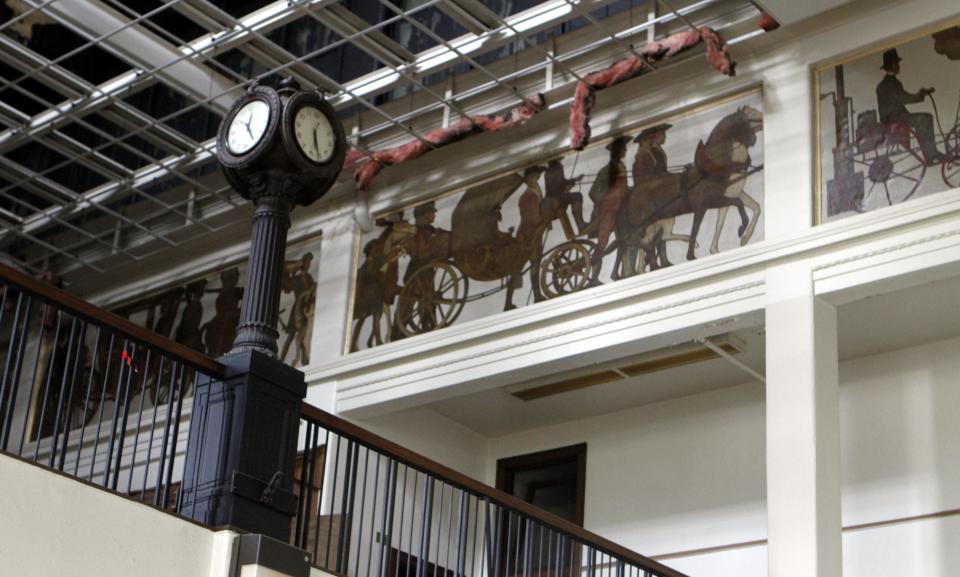
Smith recognizes he's part of a business ecosystem. He's keeping a steady watch on plans to expand Four Winds Field, the South Bend Cubs baseball stadium which neighbors Union Station to the north. He's also waiting for several nearby apartment complexes expected to open by the end of 2024.
All will influence the eventual uses of Building 84 and the administration building, he said. But he's playing the long game to ensure each structure's longevity, he said.
“If you do a quick job on a historic building but you don’t give it economic vitality," he said, "you didn’t solve the problem.”
The South Bend Tribune Building, 225 W. Colfax Ave., finished in 1921
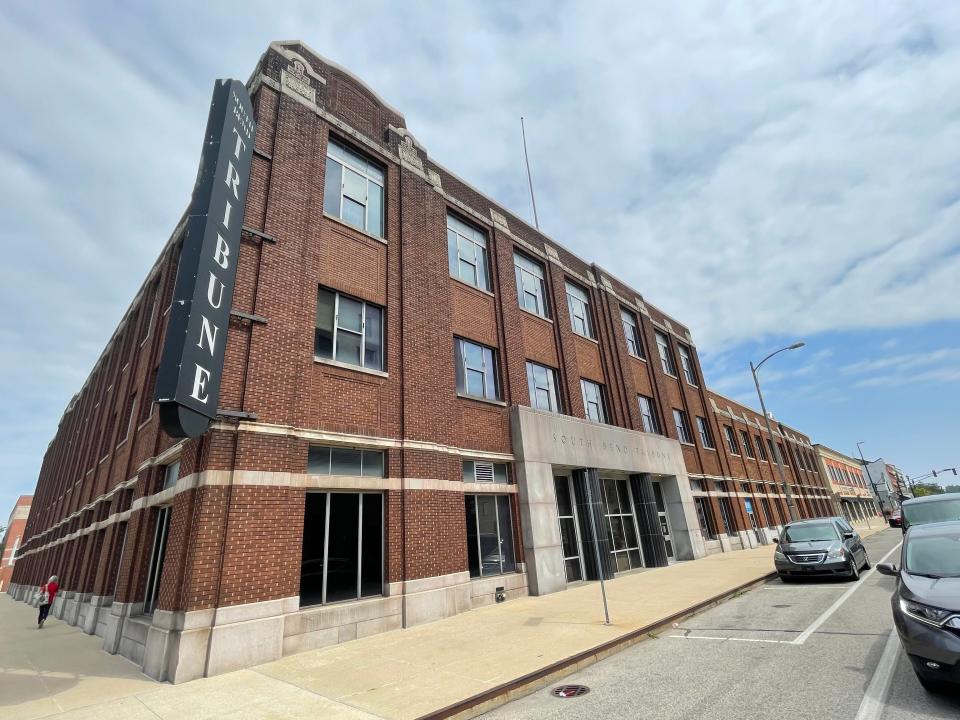
After 98 years at the corner of Colfax Avenue and Lafayette Boulevard, the South Bend Tribune in 2019 moved its permanent offices a mile south to the former Studebaker main assembly plant ― owned by entrepreneur Kevin Smith.
While The Tribune's former printing plant is the new home for South Bend City Church, the main building's three floors have gone unused for nearly four years.
The COVID-19 pandemic that swept the nation five months after the newspaper's move dampened interest from several developers, according to Chris Dautel, vice president of strategic planning for Schurz Communications, The Tribune's former owner. The forebears of Schurz founded The Tribune in 1872.
The Tribune Building's foundation is strong, Dautel said, but its interior would likely need to be demolished before reuse. Schurz pays to keep the HVAC systems running and keeps it warm enough in the winter to prevent frozen pipes.
Schurz remains the owner of the building while the newspaper is now run by Gannett, a media company that owns USA Today and nearly 400 daily or weekly newspapers nationwide.
The Tribune Building was finished in 1921 and is listed on the National Register of Historic Places.
The Pierre Navarre Cabin, Leeper Park, finished in 1820
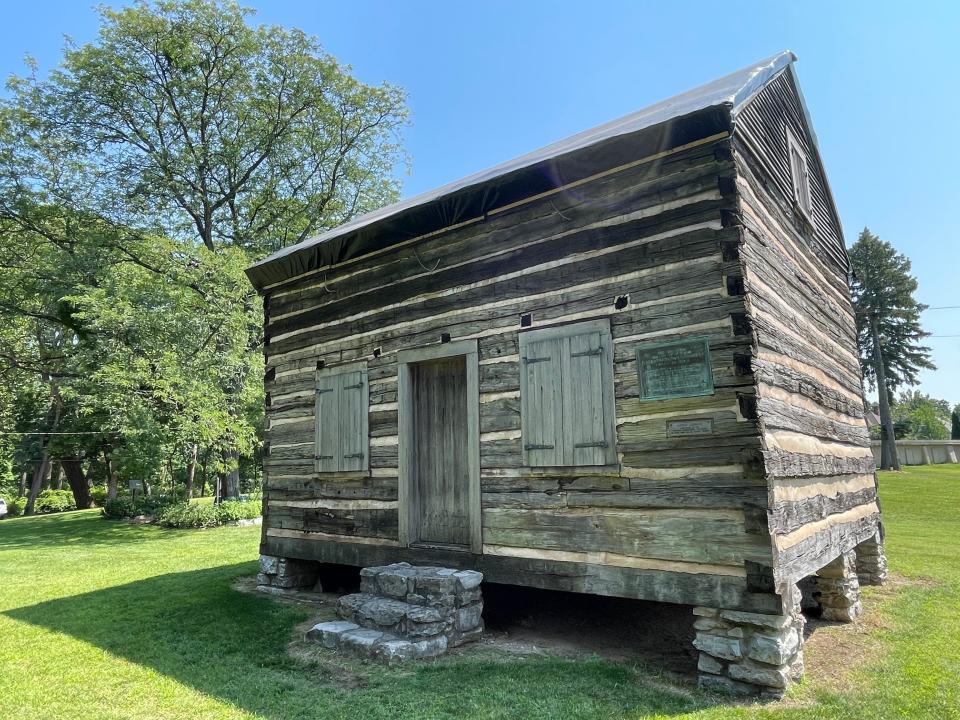
The Pierre Navarre Cabin, built in 1820, is believed to be the oldest structure and residence in St. Joseph County. It gradually deteriorated until 2000, when its owner, the Northern Indiana Historical Society, raised $150,000 to completely restore the cabin to its original appearance.
The cabin has stood in Leeper Park East since 1907. But for the past two years, it’s had a tarp shielding its damaged roof from the elements.
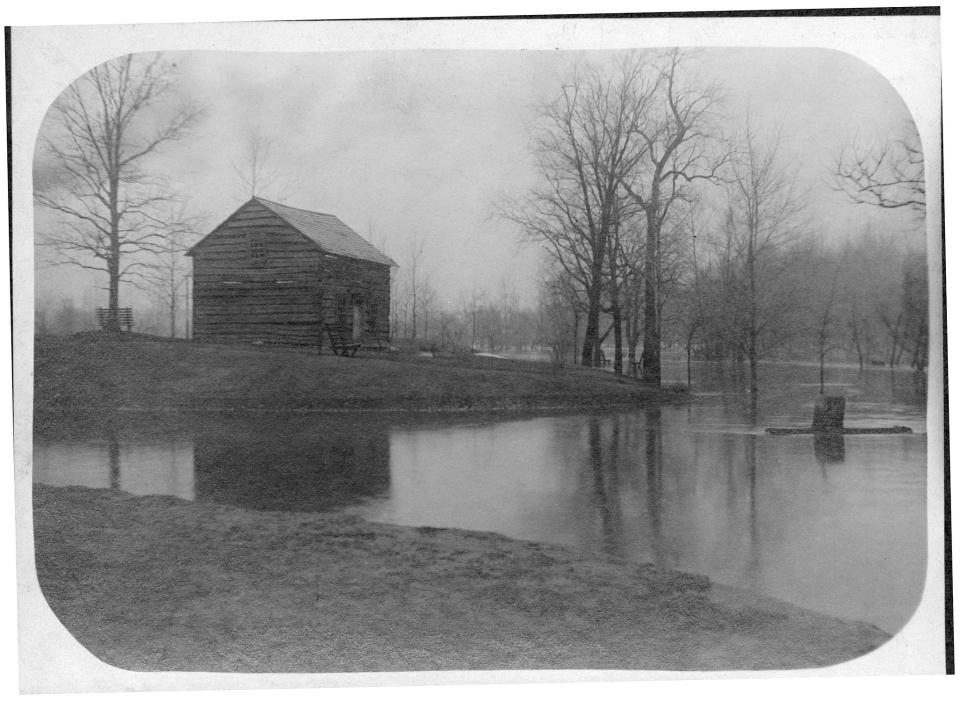
Brian Harding, director of The History Museum — whose parent organization owns the cabin — said the tarp has kept the building safe for two winters and will remain for another one.
Come the spring, the history museum will pay to install a new roof with historically accurate oak shingles. For now, the cabin is cared for with regular pest control as well as a fire and burglar alarm system.
When Pierre Navarre became the first European settler in the area, he built the simple, one-room log cabin on the north side of the St. Joseph River for him and his family. The French-American trapper and fur trader married a Potawatomi woman named Keshewaquay, and together they had at least six children.
Once it’s repaired, Harding said, the museum will likely push to move the cabin to its campus on Washington Street. The new location would make it easier to preserve and include in educational programs, Harding said.
The historic preservation commission rejected an effort to relocate the cabin in 2020. Commissioners were concerned about infringing on the historical value of Leeper Park. Some believed the cabin would lose its protected status if removed from the park, which is on the National Register of Historic Places.
The City Cemetery gate and Sexton's Cottage, 214 Elm St., finished in 1899
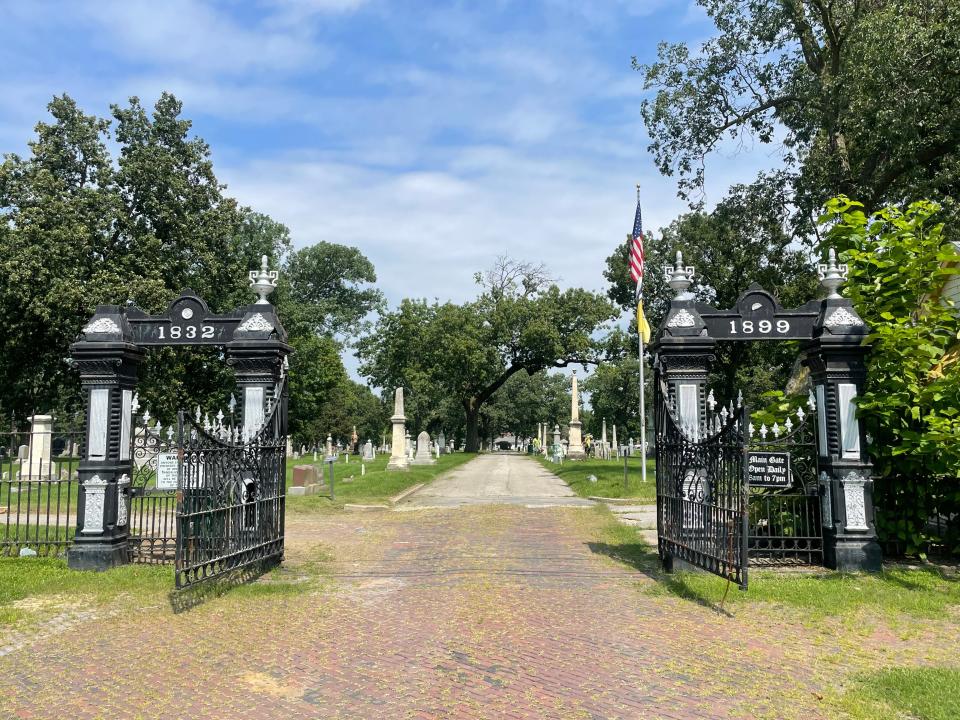
The cast iron gate at the main entrance of the South Bend City Cemetery is temporarily without its distinctive archway.
A Venues Parks and Arts vehicle damaged the archway while doing maintenance at the cemetery, city spokeswoman Allison Zeithammer said. The cemetery, along with its entryway, is owned by the city of South Bend.
VPA is planning to repair the archway and improve aging pieces of the surrounding gate, the spokeswoman said.
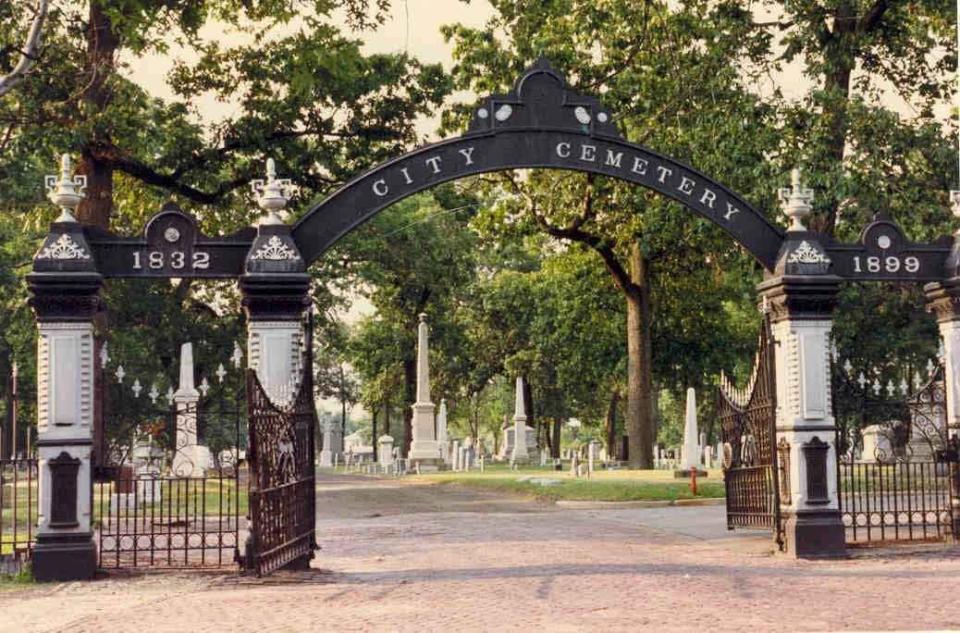
Built in 1899, the gate marks the main entrance's move from Linden Street to 214 Elm St. A path made of century-old bricks leads to South Bend's oldest cemetery, founded in 1832.
In the 21-acre tract just west of downtown lie many of the city's early settlers, such as Horatio Chapin and Lathrop Taylor, as well as industrial titans like John Birdsell. There are also the remains of the Powell Family, one of the first African American families to settle in the area in the mid-1800s. The Powells helped to found Olivet African Methodist Episcopal Church.
The gate and 400-square-foot sexton's cottage, also built in 1899, were added to the National Register of Historic Places in 2018.
The People's Church, 302 W. Washington St., finished in 1889
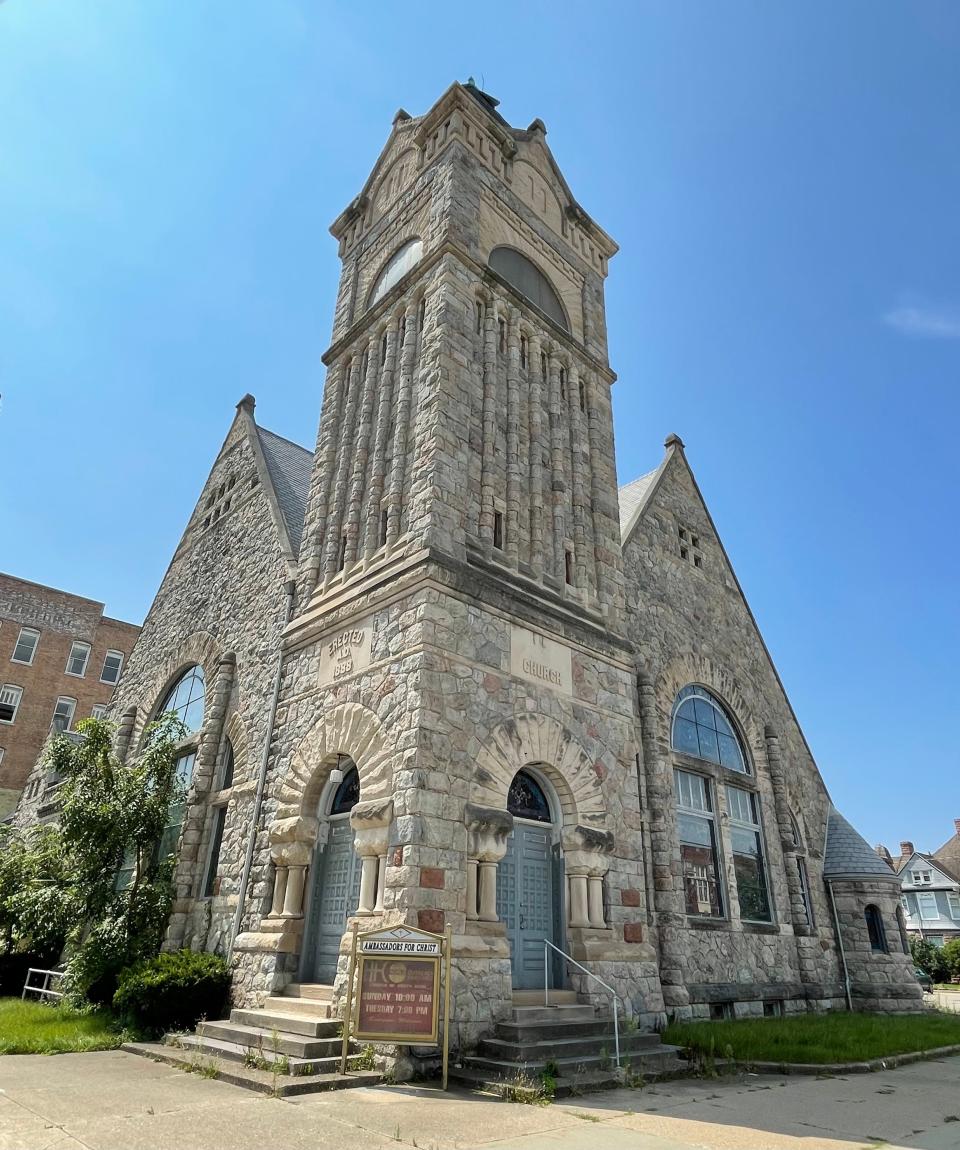
Built in the 1880s as the First Presbyterian Church, the gray stone building in the West Washington Historic District no longer hosts congregants.
Historic preservation commissioners say the church at 302 W. Washington St. isn’t being used and maintenance is lagging. There are broken windows that threaten to allow water or animals inside, according to commissioners.
Preservation advocates highlight beautiful stained-glasses windows and the church's Romanesque architectural style as reasons why it's rated as an outstanding landmark on the National Register of Historic Places.
Ambassadors for Christ Church Inc., a Chicago-based company that owns the church, did not respond to requests for comment.
“We haven’t seen much activity in that building at all," Sarah Andrews, the commission president, said.
The Pleasant View School, 65014 Indiana 931, finished in 1903
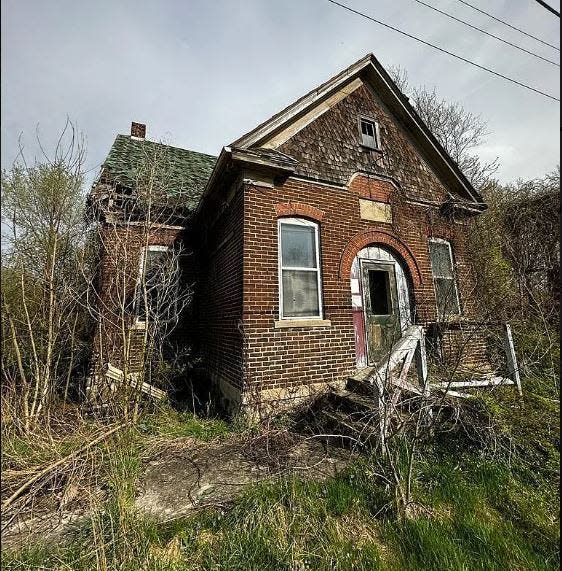
Finished in 1903, the old Pleasant View School building near Lakeville is now vacant and abandoned.
At 65014 Indiana 931, It’s the only building outside of South Bend city limits to make the commission’s list because it’s in such rough shape. Photos from earlier this year show the brick structure overgrown with vegetation.
Despite being a condemned property, the 1,000-square foot brick building was sold for $9,999 on May 25, according to a Zillow posting. A business agent for the firm that sold it did not return a request for comment..
The school is an established St. Joseph County local landmark.
Email South Bend Tribune city reporter Jordan Smith at JTsmith@gannett.com. Follow him on Twitter: @jordantsmith09
This article originally appeared on South Bend Tribune: Top 10 endangered historic properties in South Bend, St. Joseph County

